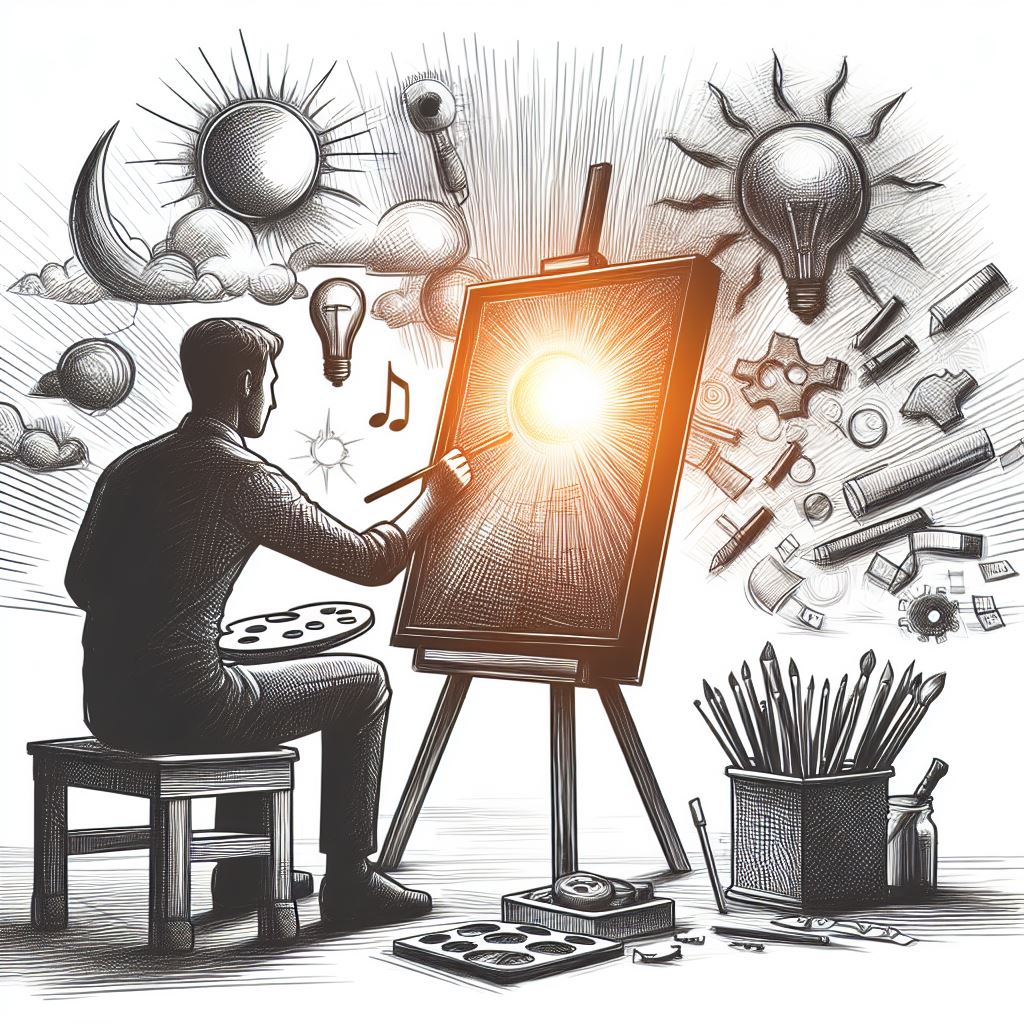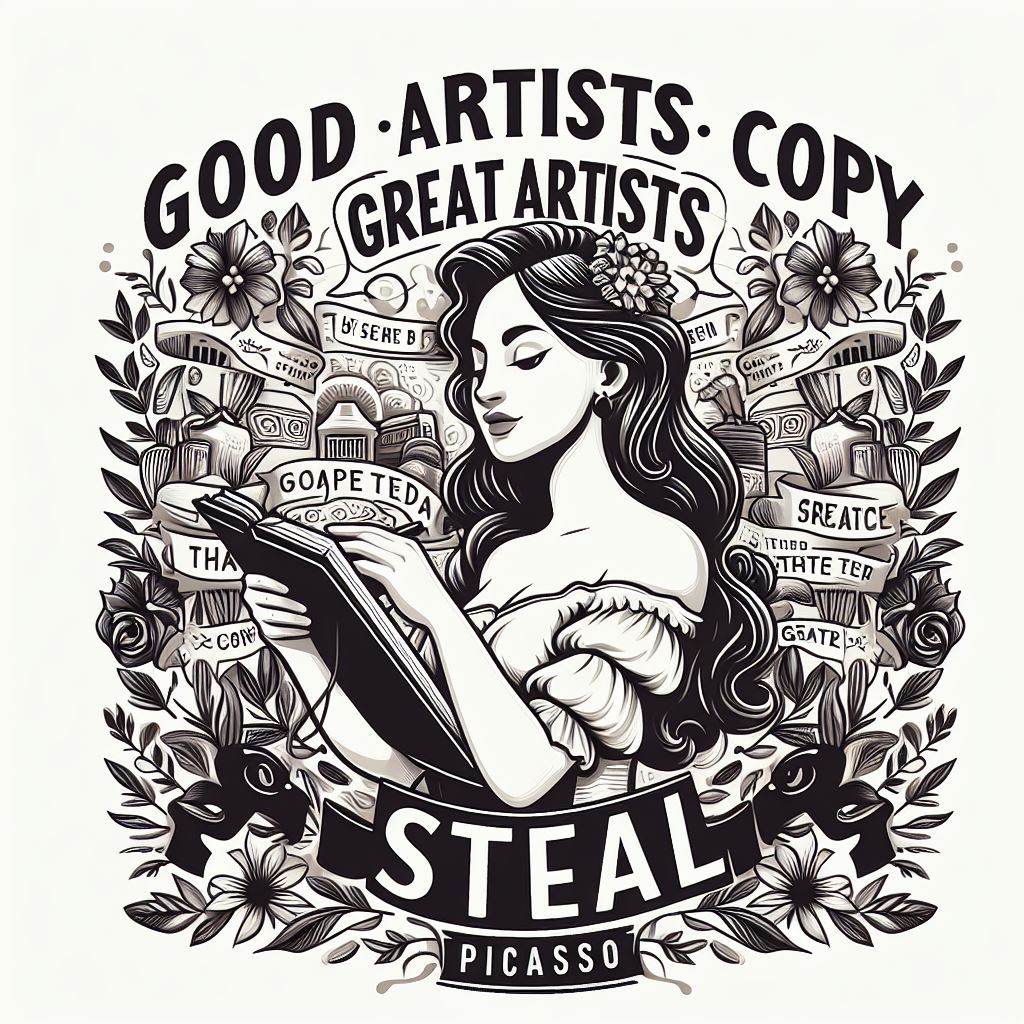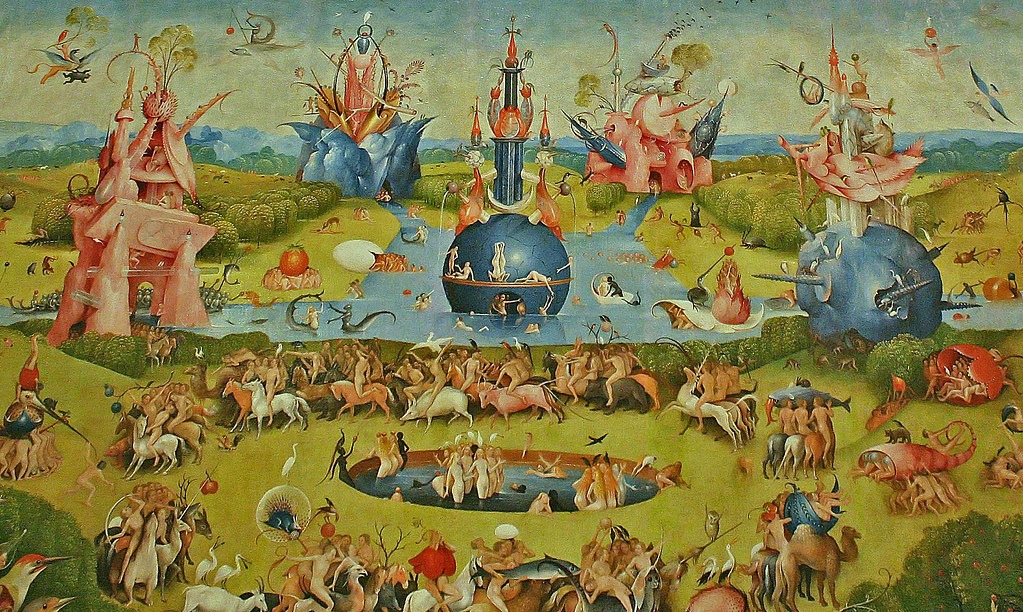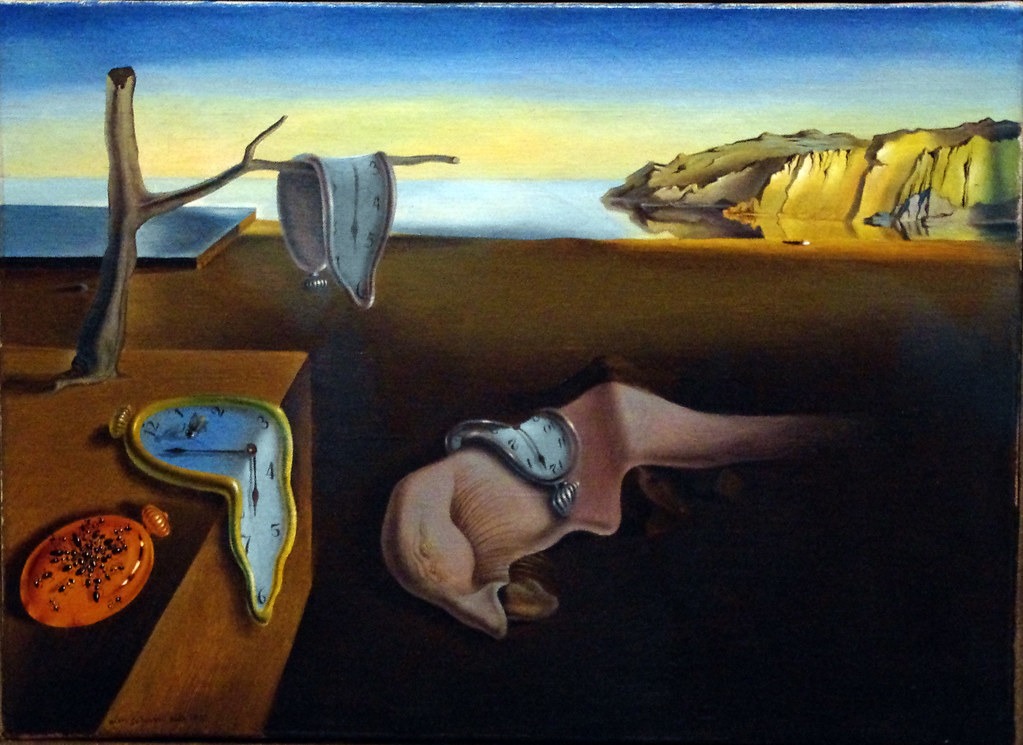
New ideas for making art always come from a source of inspiration. Often, it is the art you like the most that motivates you to get started on your own as well.
Sometimes this way doesn’t work, and it seems difficult to get back into your creative flow. Therefore, it is good to take a look for a new perspective, or, in other words, a new source that can expand your artistic horizons.
1. A New Source; Great Artists Steal
All art and stories are a mixture of everything the artist or writer has ever experienced or observed. This often happens unconsciously during the creation of artwork. You are often unaware of which experiences or memories influence what you create at that moment. Often, it is artists you admire that you use as direct inspiration for your own work.

The famous saying of Picasso means that you should not be afraid to adopt aspects or large parts of previous works in order to benefit yourself. There has not been a single artist in history who did not look up to others’ work during his own creative work.
Keep in mind that using a source is meant to eventually lead you to original ideas. Completely copying someone else’s work, under which you then stick your own name, will obviously not bring you any artistic added value.
2. Find Artworks You Don’t Like
It may sound crazy, but sometimes it’s good to ask yourself why you don’t like certain works of art. Believe it or not, but there is always a reason why you find certain artists boring, ugly, or uninteresting.
By finding out what you think makes an artwork “bad,” you can mirror this on your own work. This gives you a new perspective from which to make adjustments. You can also work on a’meaningless’ artwork to learn how to turn a bad idea into something after all.
- This way of projecting something you don’t like ultimately helps you find what you do want.
3. Symbolism
“Every artist dips his brush in his own soul, and paints his own nature into his pictures.”
– Henry Ward Beecher
Symbols are forms or objects that should not be taken literally. By looking at your own desires and past, you can give new meaning to natural concepts. Much traiditonal art from the Middle Ages was chock-full of symbolism, which had primarily mystical intent.

Telling your own story and wrapping it in a riddle also makes it interesting for your audience. To cite a few cliché examples: A sea can symbolize hopelessness, or flowers can symbolize a desire for bliss. Through your own style and choices, you can make this clear in a work of art.
4. Phylosophical questions
As an artist, you are there to give the world something about how you think about things and how you express them. People observing art have decided to take a moment to pay attention to what you have to say. Responding to important questions that deal with life, what we do here, and how we relate to ourselves will really get people thinking, because it’s easy for most people to reflect their own worldview.
People, mainly artistic personalities, love to have big issues presented in art. This can also certainly be done in a comical or dark way, depending on what you yourself think is worth bringing perspective to.
5. Dreams and Surrealism
A dream is a kind of movie played for us without our own consent. This distorted reality can be frightening, but that is precisely why it is a good source of inspiration for new art projects. A painter like Salvador Dali often used aspects of his dreams in his surreal works of art.

‘A dream is quickly forgotten if you don’t write it down. By overpainting it, you give yourself a chance to come up with new insights.’
It is also common for certain events to recur, but in a different setting or with different people. See if you can link this with pre-existing ideas you are working on. This may just open up new perspectives.
6. A Combination Of Old And New Art
Using two extremes is something many artists have tinkered with. Not only can a combination of new and old be interesting, but also:
- chaos and order
- transience and eternity
- organic and artificial
- reality and imagination
- microscopic and macroscopic
- movement and stillness
- realism and abstraction
These extremes can provide a new perspective and essentially “turn on” your inspiration. They can be used within an existing concept, but certainly also as a foundation for a new artwork.
7. The world of nature
Of course, nature is an immense source of colors, scents, and elements. It can be very obvious to draw inspiration from this.
You don’t have to literally mimic nature in your art by painting or drawing a landscape or field of flowers. Let what you see capture your imagination, and let the wilderness be the extreme of artificiality, where everything has to be created with the help of human hands. Let the freedom and radiance of nature influence you and act as a catalyst for your own creative spirit.
8. Transition Between Different Artforms
As a creative person, you have the characteristic of visualization, where you can see in your mind before you what you (approximately) want to bring to fruition. Instead of focusing on paintings, you can also use other art forms as sources.
Consider music, which also consists of shapes and colors, which can stimulate your creative brain. Music is a language that doesn’t need to be processed by your mind but goes directly to your heart. Certain music can touch you so deeply that it stirs up emotions and thoughts. These can be potential sources for generating new ideas for your own art.
Even during the creative process, listening to music is often a must for many artists because it triggers our creative minds. Classical music can be especially helpful in this regard due to the emotional depth and timelessness of its compositions.
9. Use AI In The Right Way
The advent of AI-models like DALL-E 3 is often seen as a threat to the independent artist and his struggle to make a living. This is certainly not unjustified, as it remains to be seen what impact AI will have on the creative sector.
Still, AI is an interesting tool for coming up with new ideas yourself, as these chatbots also end up getting their ideas from pre-existing Internet files.
By entering a prompt for something you would actually like to create yourself, you get numerous examples to build on. You can adopt aspects as well as use shapes as sources for a new art project.
Just know that art made by AI is absolutely unoriginal, and you, as a creator, do it most justice by using it as an inspiration generator.
10. Psychological States
Explore different psychological states and emotions, such as anxiety, serenity, or euphoria. Translate these intangible experiences into visual representations that evoke a visceral response from viewers. Converting emotions into creative energy is something almost every artist possesses. We perceive the world around us and translate it into creative expression. That is the way of life for a creative individual.
9 different psychological states:
- Euphoria
- Anxiety
- Serenity
- Melancholy
- Excitement
- Contentment
- Awe
- Despair
- Curiosity
How You Can Stay Creative
Wanting to seek out new sources is a good sign that you are working to expand your horizons as an artist. It is common for people to stay in their comfort zone and fear making “bad art.
Letting go of this requires growing pains. In addition to encountering new techniques, you will also have a much better understanding of your artistic identity and how you set yourself apart from other creators.
So the fear that what you create doesn’t matter is actually unnecessary; almost every writer or artist will doubt themselves from time to time.
Another perspective is key
As artistic individuals, we are all in search of ‘something new.’ A unique style that offers a distinct perspective on things. An important element of this is having a different perspective.
This TedTalk helps to better understand how you can start looking with a different perspective:
A Source Is Not Everything You Need
The purpose of having a source of inspiration is that it will turn you on. Looking at art will have to cause you to visualize your own ideas. You can train this power of creative manifestation so that you will never be short of ideas again.
An overload of stimuli can also cause you to get stuck in your process. It is therefore smart to stick to one source of inspiration and get everything you think you need from it.
Not Having Inspiration Is Between Your Ears
Sometimes, often or not, your creativity may seem to be lacking. That spark of fresh inspiration that makes the work flow smoothly is nowhere to be found. The phenomenon of ‘writer’s block’ is familiar to every artist. However, this has little to do with the inability to generate ideas.
Feeling uninspired is more related to your expectations of what a new idea or concept should meet.
If you have a source of inspiration and it seems that no good ideas are coming to you, it’s not the fault of the source. It has more to do with your high expectations of what your own art should achieve. Remember that a spark of inspiration is a seed that needs to grow and be developed through hard work and dedication.
Final Thoughts
Anything could be a source of inspiration that you can use for your artworks. The question you can ask yourself is: what fascinates me? Which art or story makes me feel like creating something in a similar vein?
There you have your source of inspiration already. It’s important to know that you shouldn’t rely completely on one source, but rather use it as inspiration to let your own ideas flow freely.
